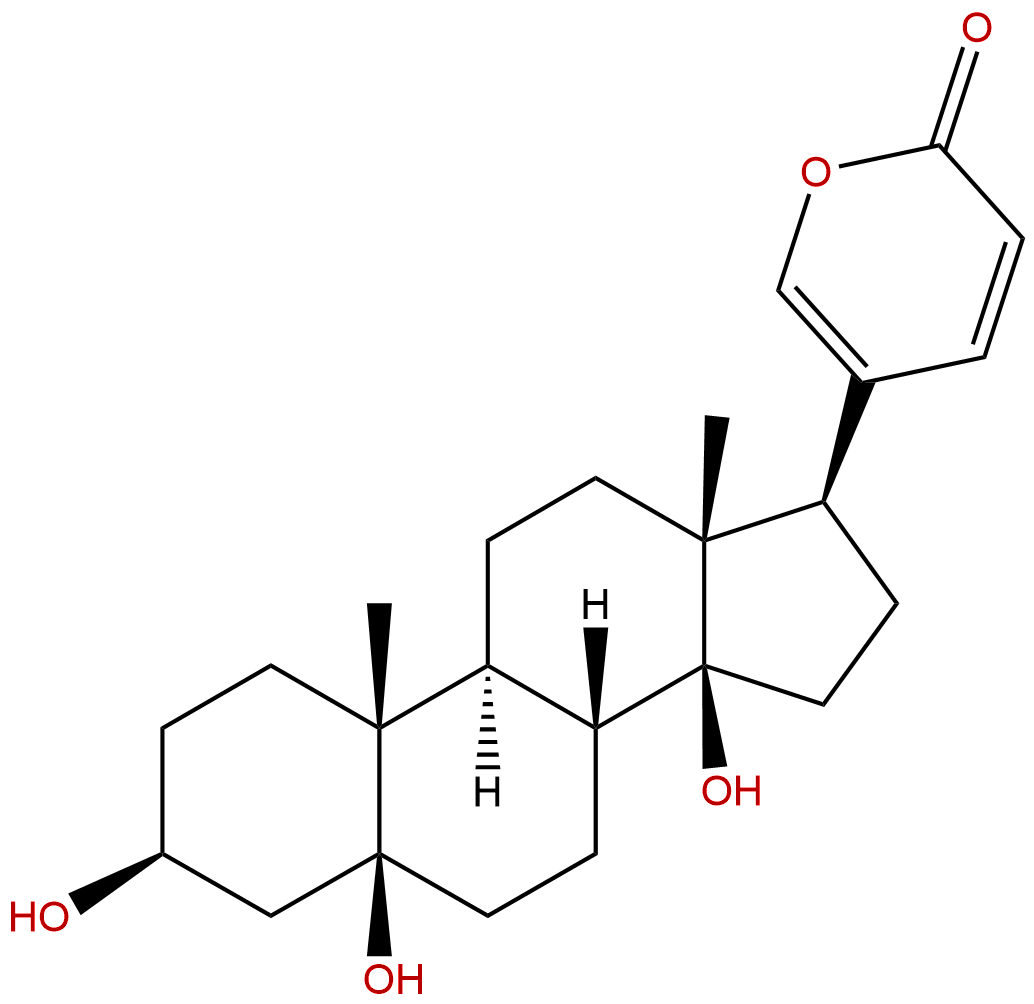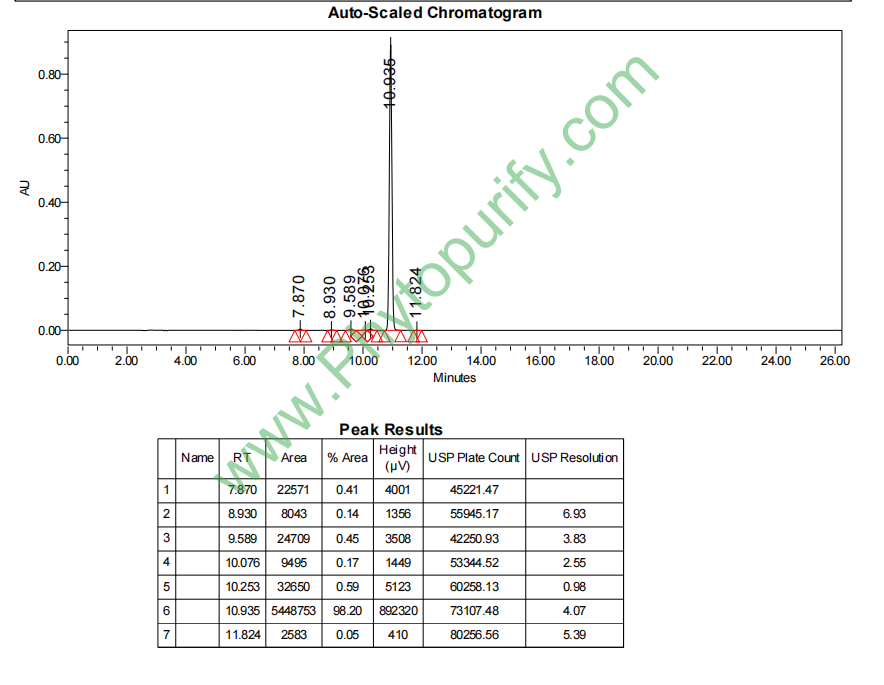
TelocinobufaginCAS No.:472-26-4 |
||||||||||
 |
|
|
||||||||

| Catalogue No.: | BP1370 |
| Formula: | C24H34O5 |
| Mol Weight: | 402.531 |
| Botanical Source: | Bufonis Venenum |
Product name: Telocinobufagin
Synonym name:
Catalogue No.: BP1370
Cas No.: 472-26-4
Formula: C24H34O5
Mol Weight: 402.531
Botanical Source: Ch'an Su and other toad poisons
Physical Description: Powder
Type of Compound: Steroids
Purity: 95%~99%
Analysis Method: HPLC-DAD or/and HPLC-ELSD
Identification Method: Mass, NMR
Packing: Brown vial or HDPE plastic bottle
Storage: Store in a well closed container, protected from air and light. Put into refrigerate or freeze for long term storage.
Whenever possible, you should prepare and use solutions on the same day. However, if you need to make up stock solutions in advance, we recommend that you store the solution as aliquots in tightly sealed vials at -20℃. Generally, these will be useable for up to two weeks.
The product could be supplied from milligrams to grams, up to kilograms
Inquire for bulk scale.
Descriptions:
Telocinobufagin (TCB), a bufadienolide extracted from Bufo paracnemis parotoid glands, shows a reversible local anesthetic action, similar to BUPI, however, without cardiac toxicity in vitro. [1]
Telocinobufagin is a novel endogenous digitalis, exhibits elevated plasma levels in patients with terminal renal failure.[2]
Telocinobufagin and marinobufagin have antimicrobial activity, the minimum inhibitory concentrations of telocinobufagin and marinobufagin were, respectively, 64.0 and 16.0 microg/mL for E. coli and both 128 microg/mL for S. aureus; they also promote an increase of the contraction force in isolated frog ventricle strips.[3]
Telocinobufagin has potential immune system regulatory effects, suggests that it could be developed as a novel immunotherapeutic agent to treat and other immune-mediated diseases, and it may become a new immunomodulatory agent in many regions.[4]
Telocinobufagin can enhance the Th1 immune response and protect against Salmonella typhimurium infection .[5]
Telocinobufagin can induce colon cancer cell apoptosis by oxidative stress and apoptosis pathway.[6]
References:
[1] Patrocínio B A, Claúdio M. Universidade Federal do Ceará, 2004.5.26.
[2] Komiyama Y, Dong X N, Masaki H, et al. Clin Biochem, 2005, 38(1):36-45.
[3] Cunha Filho G A, Schwartz C A, Resck I S, et al. Toxicon, 2005, 45(6):777-82.
[4] Cao Y, Song Y, An N, et al. Fund Clin Pharmacol, 2009, 23(4):457-64.
[5] Wu S C, Fu B D, Shen H Q, et al. Int Immunopharmacol, 2015, 25(2):353-62.
[6] Liang S T, Li X W, et al. Nan Fang Yi Ke Da Xue Xue Bao 2016, 36(7):921-6.
[7] Ma X C, Zhang B J, Xin X L, et al. Nat Prod Co, 2009, 4(4):179-84.
HPLC of Telocinobufagin
